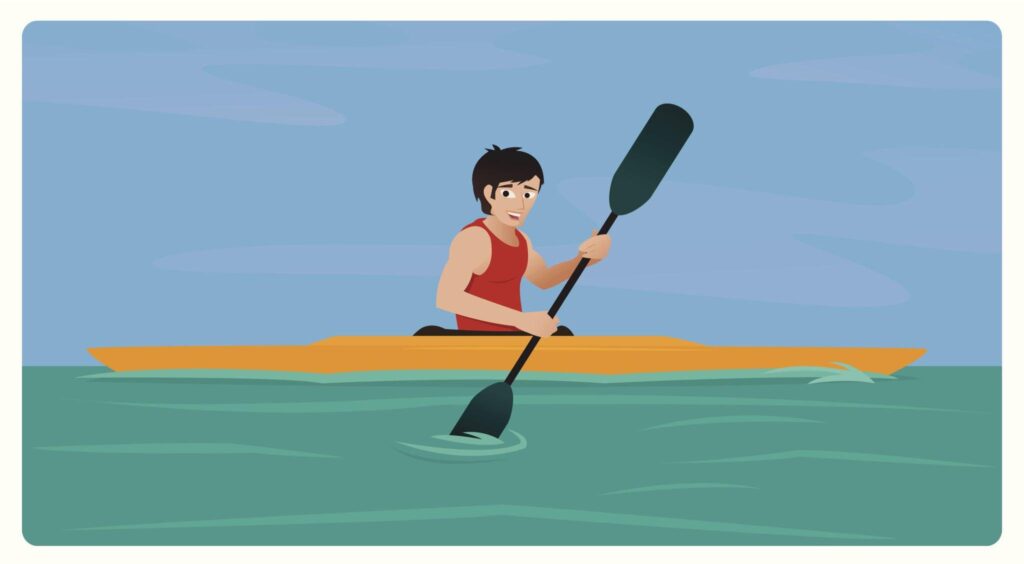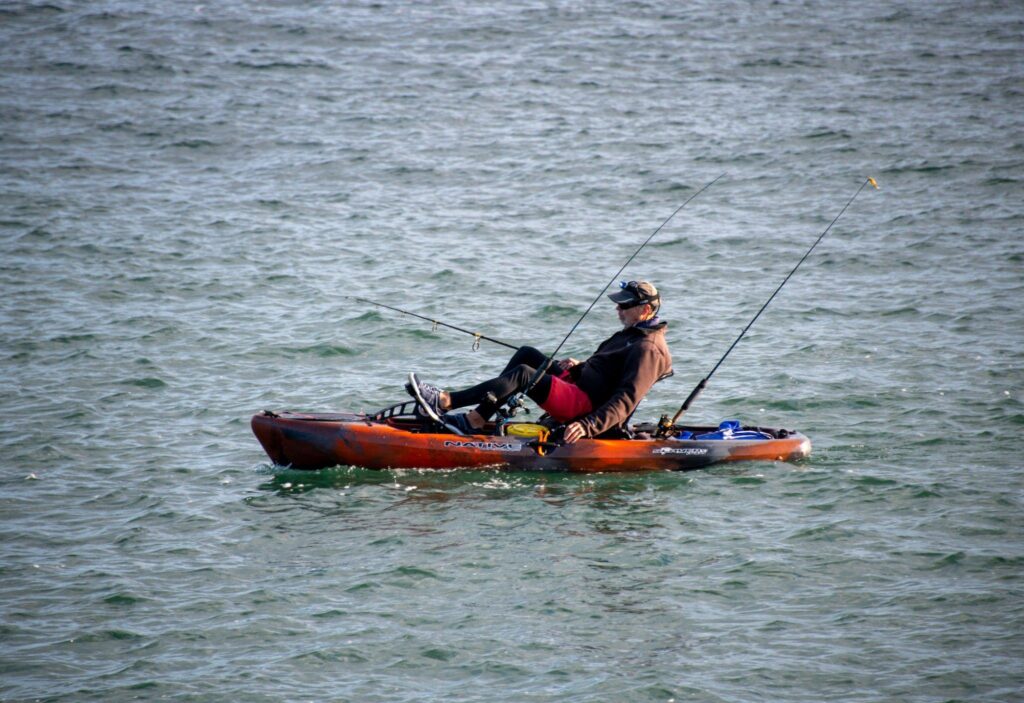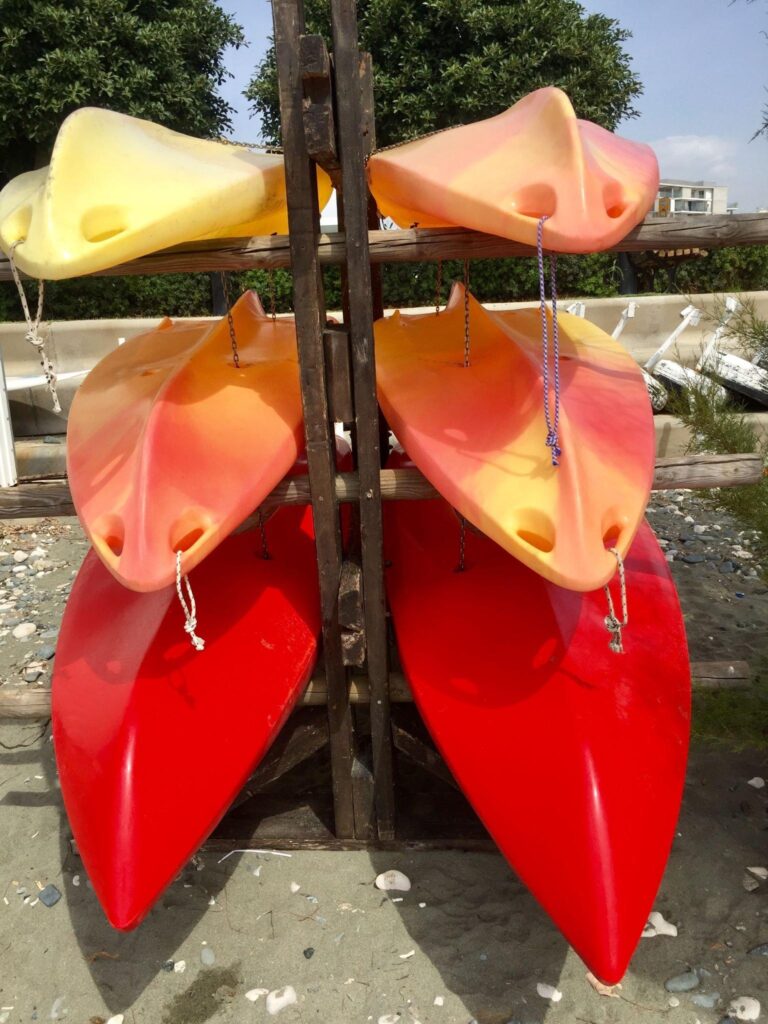If you are considering buying a fishing kayak, one of the most crucial factors to consider is stability. When you’re out on the water, feeling secure and stable in your kayak is paramount. But how stable is a fishing kayak, and what factors affect its stability?

In this guide, I will explore the stability of fishing kayaks and delve into the various factors that impact their stability. We will cover everything from hull design and sit-in vs. sit-on-top models to outriggers, rudders, and water conditions. By understanding these factors, you can make an informed decision when choosing a fishing kayak that provides the stability you need.
Key Takeaways:
- Stability is a crucial factor to consider when buying a fishing kayak.
- The stability of a fishing kayak is influenced by various factors such as hull design, sit-in vs. sit-on-top, width and weight capacity, outriggers, rudders, and water conditions.
- Understanding the concepts of initial and secondary stability is essential to choosing the right fishing kayak.
- Enhancing the stability of your fishing kayak can be achieved through outriggers and rudders.
- Water conditions such as currents and waves can influence the stability of your kayak, making it important to adjust your body position accordingly.

Table of Contents
Understanding Stability: Initial and Secondary Stability
When choosing a fishing kayak, one of the most crucial considerations is stability. Stability refers to the kayak’s ability to maintain balance and prevent tipping over during your fishing excursion. There are two different types of kayak stability that you need to know: initial and secondary stability.
Initial Stability
Initial stability refers to the stability of a kayak when it is upright or sitting flat on calm waters. It provides a sense of balance to users, especially beginners. Kayaks with excellent initial stability are generally wider, have a broad base, and are flatter on the bottom. They are ideal for calm waters, paddling around a lake, or fishing in still waters.
Secondary Stability
Secondary stability refers to the kayak’s ability to remain stable even when tilted or in rough waters. It allows experienced users to confidently maneuver their kayaks in various conditions. Kayaks with enhanced secondary stability are typically narrower, have a rounded hull or pontoon-shaped, and offer more firmness and support while fishing in choppy waters. They are usually favored by experienced anglers who prioritize stability over speed and comfort.
Understanding the differences between initial and secondary stability is an essential factor in choosing the perfect kayak for you. Whether you prioritize stability or speed, or need the perfect balance between both, it’s essential to understand initial and secondary stability when selecting your perfect fishing kayak.
Hull Design: A Crucial Factor for Stability

When considering the stability of a fishing kayak, the hull design is a crucial factor to keep in mind. The hull is the shell or outermost layer of the kayak that comes into contact with the water. Its design determines the kayak’s stability level, maneuverability, speed, and overall performance.
A kayak with a flat hull offers excellent initial stability. This design makes it easier to balance and provides a stable platform for beginners to learn from. The flat hull also gives you ample space to move around or stand up when fishing. However, keep in mind that kayaks with flat hulls tend to be slower than other designs.
Alternatively, a kayak with a pontoon or rounded hull provides enhanced secondary stability, allowing experienced kayakers to handle unpredictable water conditions with more confidence. This is because the rounded shape enables the kayak to rock less when tilted. The increased secondary stability of a kayak with a pontoon or rounded hull means that it remains stable, even in rough waters.
Overall, it is critical to understand the differences between these two hull designs to make an informed decision when purchasing a fishing kayak. A flat hull will be perfect for beginners seeking stability, while pontoon or rounded hulls would be better suited for those seeking more advanced stability.
Sit-in vs. Sit-on-Top: Which Offers Better Stability?
If you’re considering purchasing a fishing kayak, one of the top decisions you’ll need to make is whether to opt for a sit-in or sit-on-top model.
Sit-in kayaks provide a lower center of gravity, which contributes to better stability. They offer a more enclosed design, which provides enhanced protection from the elements and reduces the chance of getting wet. Additionally, the lower center of gravity provides a more secure feeling, especially for beginners.
Sit-on-top kayaks, on the other hand, are more popular for fishing due to their open design. They allow anglers to sit and stand more confidently, providing better visibility of the water and more freedom of movement. The broader base of sit-on-top kayaks also contributes to better stability, making them ideal for individuals with larger body weight.
One thing to keep in mind is that sit-on-top kayaks tend to have a higher center of gravity, which can impact their stability in certain water conditions. However, their broad base and flattened hull design provide enhanced secondary stability, allowing experienced kayakers to maneuver confidently in rough or unpredictable waters.
Ultimately, the choice between a sit-in or sit-on-top kayak will largely depend on your preferences and needs. If you prioritize stability, especially in calm waters, a sit-in kayak may be the better option. However, if you value freedom of movement and the ability to sit and stand, a sit-on-top kayak may be the way to go.
Enhancing Stability: Outriggers and Rudders
If you’re looking to take your fishing kayak stability to the next level, consider installing outriggers or a rudder. Outriggers provide additional flotation and stability, making it easier to navigate choppy waters. They also offer a wider base, which helps to increase kayak stability and reduce the chances of capsizing.
Alternatively, a rudder can help with the alignment of the kayak, keeping it stable and heading in the right direction. This can be especially helpful in windy conditions or when facing strong currents. Not only does a rudder increase kayak stability, but it also enhances maneuverability, making it easier to turn and navigate through challenging water conditions.
When using outriggers or a rudder, it’s important to ensure proper alignment of the kayak. Misalignment can result in decreased stability, rendering the accessories useless. But when installed correctly, they can make a significant difference in your kayak’s stability and enable you to enjoy a safer, more comfortable, and enjoyable fishing experience.
Factors Affecting Stability: Width, Weight Capacity, and Water Conditions
The width and weight capacity of a fishing kayak are crucial factors that impact its stability. A broader base provides more stability, which is especially important in calm waters. If you are a heavier individual, consider a kayak with higher weight capacity to ensure maximum stability while on the water.
It’s also important to consider the effect of movement and water currents on your kayak’s stability. If there are strong currents or waves, adjust your body position to maintain balance and stability. Keep your center of gravity low and your movements gradual and smooth.
| Factor | Effect on Stability |
|---|---|
| Width | A broader base provides more stability, especially in calm waters |
| Weight Capacity | A kayak with higher weight capacity ensures stability and support for heavier individuals |
| Movement | Rapid or sudden movements can disrupt stability, so it’s important to keep your movements gradual and smooth |
| Water Currents | Strong currents or waves can impact your kayak’s stability, so adjust your body position accordingly |
Being aware of these factors and adjusting your body position accordingly will help you maintain stability while on the water.
More: Are Inflatable Kayaks Good for Fishing?
Conclusion
Congratulations! You’re now equipped with the knowledge and kayak stability tips to have a safe and spectacular fishing experience. Remember to consider the hull design, sit-in versus sit-on-top models, outriggers, width and weight capacity, rudders, and water conditions when selecting your fishing kayak.
Don’t be afraid to stand up on your kayak and try out different fishing techniques. With the right kayak, you can confidently move and even stand without the fear of falling.
Always prioritize safety when kayaking to ensure a fun and memorable time. Use top-quality safety gear and remember to check the weather and water conditions before heading out.
You may like to know: Best Fishing Kayaks Under 600: Unbeatable Value!
FAQ
How Stable Is A Fishing Kayak?
The stability of a fishing kayak can vary depending on several factors, including hull design, width, weight capacity, and water conditions. Understanding these factors will help you choose a kayak that suits your stability needs.
What Are Initial And Secondary Stability?
Initial stability refers to a kayak’s stability when it is upright or sitting flat on calm waters. It provides a sense of balance, especially for beginners. Secondary stability, on the other hand, refers to a kayak’s ability to remain stable when tilted or in rough waters, allowing experienced users to confidently maneuver their kayaks.
How Does Hull Design Affect Stability?
The hull design plays a crucial role in determining the stability of a fishing kayak. A flat hull offers excellent initial stability, while a pontoon or rounded hull provides enhanced secondary stability. Understanding the different hull designs will help you choose the right kayak for your stability needs.
Which Is Better For Stability, Sit-In Or Sit-On-Top Kayaks?
Sit-in kayaks offer a lower center of gravity, providing enhanced stability and protection from the elements. Sit-on-top kayaks, on the other hand, are more popular for fishing due to their open design, allowing anglers to sit and stand more confidently. Both types have their advantages, so it depends on your preferences and specific needs.
Can Outriggers And Rudders Increase Kayak Stability?
Yes, outriggers and rudders can enhance the stability of your fishing kayak. Outriggers provide additional flotation and stability, especially in rough or choppy waters. Rudders improve maneuverability and can help align the kayak for better stability in challenging conditions. These accessories can be valuable additions to your kayak setup.
What Factors Affect Kayak Stability?
The width and weight capacity of a fishing kayak, as well as water conditions such as currents and waves, can influence its stability. A wider kayak with a broader base generally offers better stability, especially in calm waters. It’s important to consider these factors and adjust your body position accordingly to maintain stability.
